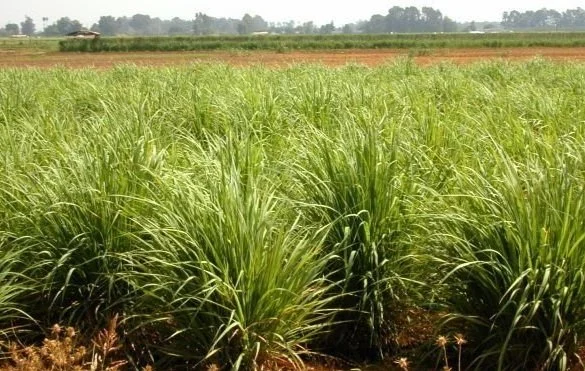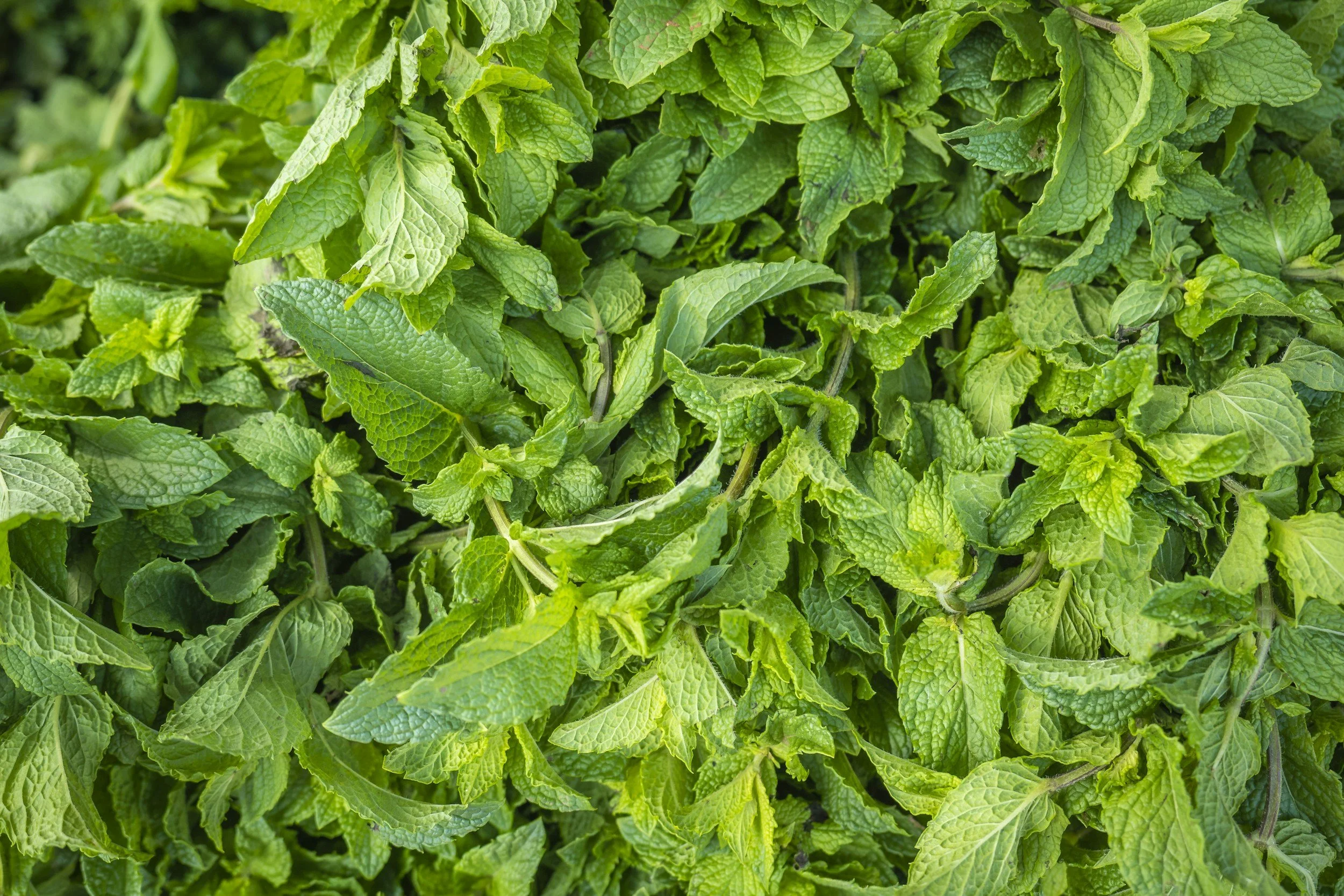A Guided Calendar to Exploring the World of Herbalism
12 plant allies to consider for your next tea time
Diving into the vast world of herbalism isn't for the faint of heart. If you’re anything like me you can easily get overwhelmed with the enormity of information - both true and untrue - that there is on the best ways to use plants and harness their amazing properties. The simple fact, however, is that herbalism, just like many other things in life, is a deeply personal journey. Each practitioner responds to plants in their own way and comes to cultivate and nourish unique associations based on their own body.
The temptation may exist to dive in head first and create a fully stocked apothecary dotted with dozens of options for making teas, tinctures, salves, and the like. But to intimately get to know plants and herbs takes time.
I have found the most success when I have taken weeks and months getting to know a singular herb or plant. There is something special that happens when you cultivate a daily relationship with a plant ally. You can slowly experiment with quantities and how it reacts to other plants - both in flavor and in effect. Doing this also allows you to apply the experimentation to an array of moods and emotions and observe how it may fit in with other aspects of your daily life.
Below is a selection of 12 plant allies that I hold near and dear within my practice. Although these aren't the most exotic or expensive, for me, they truly work. They have become trusted staples that I seek out when stressed or sick.
If you are unsure of where to start, use the plants below as a guide and remember to approach your herbalism journey from a place of receptivity and curiosity. Dedicate one month to exploring each of the plants below and take note of your findings. What is it that you’re able to glean about yourself and what might you learn about the natural world at large? Happy sipping!
Ashwagandha
Ashwagandha is having a bit of a moment and for good reason. This plant is an evergreen shrub that grows in Africa and Asia and is often used in the form of its dried roots which can also be powdered. Some people tout ashwagandha as an adaptogen, and while the research is admittedly spotty for its effectiveness in this department, I still love this plant for its stress-busting effects. I tend to incorporate it into bedtime teas or other blends used to bring a sense of calm throughout the day. Its flavor is incredibly mild making it a great option to pair with bolder flavors. I personally love to use alongside lemon balm for an added dose of tranquility.
Cinnamon
Cinnamon is one of my all time favorite additions to tea. As someone who has their fair share of inflammation, I love cinnamon for its ability to marginally reduce pain and swelling. Plus it just tastes good. I really enjoy adding the quintessential baking spices to my teas in the fall when the weather starts trending cooler, but for me, cinnamon has some staying power. As spring approaches, I find myself still leaning on this cozy spice but brightening it up with more energetic herbs such as lemongrass.
Elecampane
It has only been within the last year that I have discovered and began working with elecampane, but it has been a game changer for staving off sickness within my household. Elecampane is traditionally used in the form of the dried root, and while it is native to Europe, it can just as easily thrive in North America. This plant is an absolute must for respiratory issues. Anytime I have a cough or have been out in cold and damp weather, I make sure to have a nice cup of tea with elecampane. Although it’s not entirely displeasing in my opinion, elecampane is a potent root, so a little bit goes a long way. One of my favorite pairings involves adding a cinnamon stick for a complementary flavor and some chamomile to take the edge off.
Lemongrass
While some people tout lemongrass as an antibacterial, antifungal, and anti-inflammatory plant, my relationship with it is a bit different. Lemongrass is one of the few herbs that I don’t add to my teas for any sort of medicinal benefit. Instead, I love it for the flavor and nuance it’s able to bring to blends. I often find myself building teas based on how my body is feeling, and if I want that cup to feel a little lighter and brighter, lemongrass is my go to. You’d be hard pressed to find an herb that I wouldn’t be willing to pair lemongrass with, and nothing can beat a cold glass of lavender, lemongrass, and honey tea on a hot summer day.
Peppermint
Peppermint is another very accessible herb that helps with a whole host of ailments. This plant and its spearmint counterpart are incredibly easy to grow and offer a bold flavor. While peppermint can help with stress and digestion, I often find myself reaching for ashwagandha, ginger, and lemon balm when looking for help in those departments. It is, however, the first plant I’ll go to when I’m battling a migraine or headache. It also contains menthol and can be very soothing and cooling when you find yourself battling certain illnesses. The mint family has a strong flavor, so I prefer to keep teas super simple, often using just peppermint, honey, and water, but other milder plants would make a fine addition for a peppermint blend.
Lavender
There’s something so ethereal about lavender. The beauty of fresh lavender fields is matched by the plant’s unique but delicate flavor and aroma, and for that reason, I love utilizing this herb in teas. While I do lean on lavender to aid in sleep and a good nervous system reset from time to time, my relationship with it is much like lemongrass. It brings a certain optimistic and energetic quality to the teas it’s a part of. Out of all the herbs on this list, lavender is the one I most frequently use in other applications. It makes for a delightful syrup that can be used in everything from coffee and cocktails to over a fresh batch of pancakes. I also find lavender to be a crowd pleasing option when it comes to scrubs, lotions, lip balms and a whole host of other bath and body products.
Lemon Balm
When it comes to tapping in our herbal allies to get a good night’s sleep, lemon balm is high on my list. While I still love lavender, chamomile, and all the other options that promote sleep, I have found lemon balm to have the most profound effect in inducing sleepiness. I also appreciate the mild flavor of lemon balm that lends itself well to being the base of any blend. I love to pair this herb with the likes of cinnamon, orange peel, or allspice or a nice cozy pre-bedtime blend.
Raspberry Leaf
If I was forced to pick any one herb to practice with it would be raspberry leaf for the sole way in which it affects my hormonal cycle. For my girlies out there that find themselves dreading the menstruation part of their cycle and are looking for some natural relief, give this plant a try. At the first signs of PMS, I like to have a cup of raspberry leaf tea daily or every other day and continue it throughout the beginning of my cycle. Do I do this every month? Certainly not, but in the times where I’ve skipped out on this practice I find myself wishing I hadn’t. When disciplined about getting in several servings pre-menstruation, I find my flow to be lighter and any cramping to be completely absolved. For me, this plant has taken my periods from slightly uncomfortable but fine to barely noticeable and I’m all the happier for it. Like many others on this list, it’s very mild and is a great base for other fun flavors.
Chamomile
My reliance on chamomile has come and gone over the years. To be completely honest, I always found it to be a bit overrated until recently. Sure, it makes for a nice soothing cup of tea just before going to sleep but it has forever seemed a bit lackluster. Now, however, my relationship with chamomile has shifted and I’ve come to understand that its true power lies in how it works with other herbs. Chamomile is the great peacekeeper of my apothecary and can unify plants with vastly different properties in a way no other herbal ally can. I find that in lighter blends, chamomile plays a complementary role giving all actors their own stage time. On the other hand, when paired with sharper flavors, chamomile is able to round out a blend and offer a certain softness that you likely wouldn't recognize unless it wasn’t there.
Ginger or Galangal Root
I’m very fortunate to be someone that is not often plagued with tummy issues. When it comes to battling indigestion or nausea, it’s hard to argue with the power of a cup of ginger tea. This fiery root is not only good for indigestion but also contains anti-inflammatory properties. I will typically build a ginger blend based on the intensity of the issue I’m wanting it to remedy. For more overt cases, I like to keep it simple and will often pair another base herb with a large quantity of ginger. For more mild discomfort, I’ll pair ginger with a whole host of things and use it as an opportunity to experiment with different flavor combinations and quantities. Recently, I’ve been practicing more with galangal which is also a member of the ginger family. While galangal has a similar peppery quality as ginger, it also carries more of an earthy quality that I find to be a unique addition to my herbal lineup.
Clove
Clove is one of those spices that most people either love or hate. I myself am in the first camp and find it to offer a certain warmth and coziness that is especially pleasant in the colder months. That fact aside, clove has plenty of other redeeming properties from being anti-inflammatory to antimicrobial. Clove contains a compound called eugenol which acts as a natural anesthetic. For me - and for many others I’ve talked to - this compound often results in a sort of numbing sensation that I love to lean on any time I have a sore throat. While I don’t find that clove is often able to remedy sickness, it does bring some comfort and relief to symptoms. Clove has a strong flavor so I enjoy pairing it with a milder base herb and some complementary warm spices such as cinnamon and ginger.
Butterfly Pea Flower
While most of the herbal allies on this list offer some sort of bodily medicinal benefit for me, I enjoy butterfly pea flowers for the sheer joy they bring - but hey, that counts too. While there are some claims that these flowers can help with digestion, reducing blood pressure, and providing antioxidants, I use them exclusively for their beautiful rich color. Add a few flowers to other lightly colored herbs and your tea will turn into a vibrant blue color. Add a few additional drops of citrus and it further transforms into a striking purple. In order to end up with a beautifully colored cup of tea, I tend to stick to lightly colored plants like calendula, chamomile, or linden or dried roots like ashwagandha. But don’t stop there, this delightful little gift from nature can be used as a natural dye for a whole host of things. The possibilities are truly endless!












